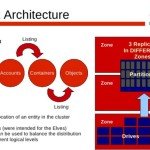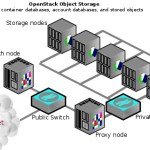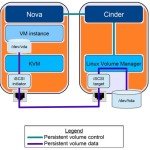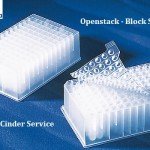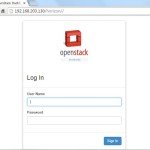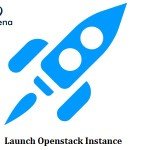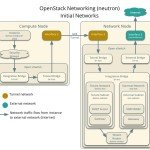This article will demonstrates the deployment of telemetry modules on Openstack environment. The telemetry services are developed in the name of ceilometer. Ceilometer provides a framework for monitoring, alarming and metering the OpenStack cloud resources. The Ceilometer efficiently polls metering data related to OpenStack services. It collects event & metering data by monitoring notifications sent from OpenStack services. […]
Openstack Tutorial
Openstack – Configure Orchestration Module (HEAT) – Part 17
HEAT is Openstack’s orchestration program. It uses the template to create and manage openstack cloud resources. These templates normally called as HOT (HEAT orchestration template). The templates will help to you to provision bunch of instances, floating IPs, volumes, security groups and users in quick time. A Heat template describes the infrastructure for a cloud application in […]
Openstack – Create Initial Rings – Object Storage – Part 16
This article will demonstrates that how to create the initial account, container, and object rings. These rings creates configuration files that each node uses to determine and deploy the storage architecture. The account server uses the account ring to maintain lists of containers. The container server uses the container ring to maintain lists of objects . The object […]
Openstack – Configure the Object Storage – Storage Node – Part 15
This article will demonstrates that how to install and configure the object storage node for Openstack environment. Object storage node is responsible for account , container, and object services. For the tutorial simplicity, I will use the block storage server as object storage server. We will add new storage LUN for object storage service and […]
Openstack – Configure the Object Storage – Controller Node – Part 14
Openstack Object storage solution has been developed under the project called “swift”. It’s a multi-tenant object storage system and highly scalable one. It can manage large amounts of unstructured data at low cost through a RESTful HTTP API. swift-proxy-server service accepts OpenStack Object Storage API and raw HTTP requests to upload files, modify metadata, and create […]
Openstack – Configure the Block Storage – Storage Node – Part 13
This article will demonstrates that how to install and configure Openstack Storage nodes for the Block Storage service (cinder). For the tutorial simplicity , we will use the local disk in LVM as back-end storage. In the upcoming articles ,we will replace the LVM with CEPH storage, once we familiar with cinder services and functionalities. In […]
Openstack – Configure the Block Storage – Controller Node – Part 12
The Openstack block storage service(cinder) provide the access to the block storage devices to the openstack instances using various back-end storage drivers like LVM ,CEPH etc. The Block Storage API and scheduler services runs on the openstack controller node and openstack storage node is responsible to provide the volume service. You can configure N-number of […]
Openstack – Install & Configure Horizon Dashboard – Part 11
Horizon Dashboard is an optional component in Openstack which provides the webpage to launch the instances in few clicks. Horizon is fully depend on openstack core functionalities like keystone (Identify), Glance (Image Service), nova-compute (Compute), and Networking (neutron) or legacy networking (nova-network). Object Storage service can’t be used in dashboard since its a stand alone service. […]
Openstack – Launch Instance using Command Line – Part 10
Openstack instances can be launched using command line without using the horizon dashboard service. In this tutorial series, we yet configure horizon. I would like to create the new openstack instance without horizon using command line. To launch an instance, we must at least specify the OS flavour, image name, network, security group, key, and instance […]
Openstack – Neutron – Create Initial Networks – Part 9
In openstack , We need to create the necessary virtual network infrastructure for Neutron Networking. This network infrastructure will be used to connect the instances including external network (internet) and tenant network. Before creating the instance , we need to validate the network connectivity. This article will demonstrate that how to create the required virtual infrastructure […]



